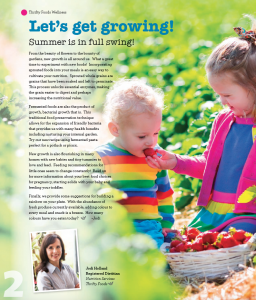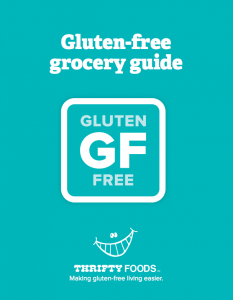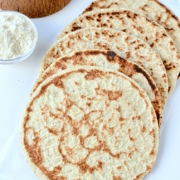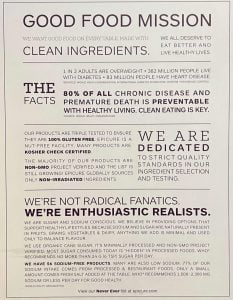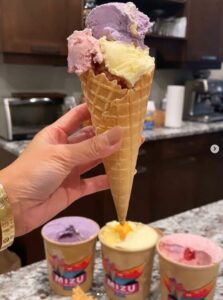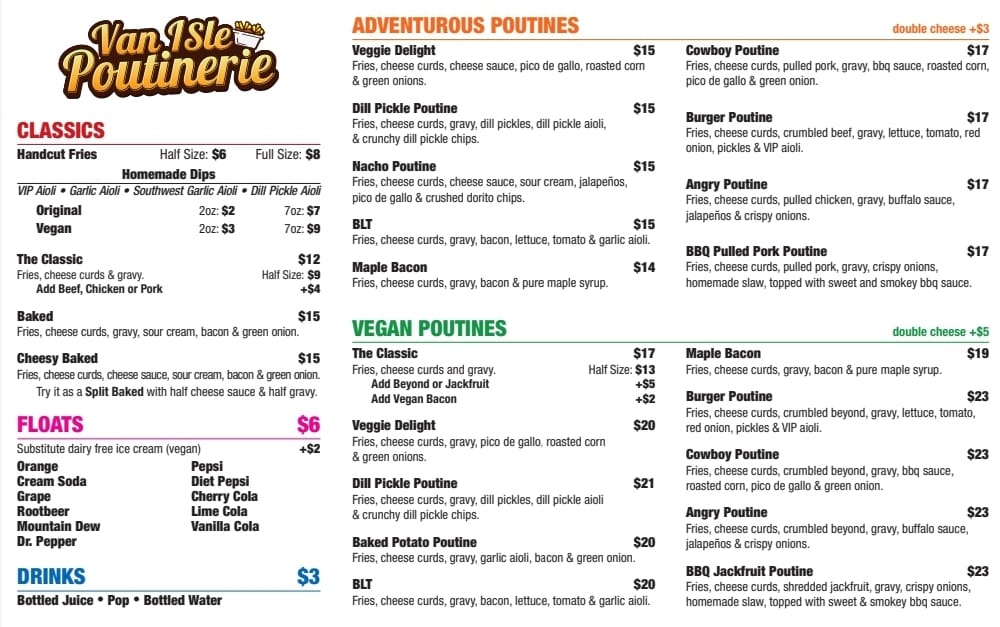The Gluten-Free Grocery Cart

Jodi Holland, Registered Dietitian
If the name Jodi Holland rings a bell, it may be that you are a fan of her articles in Thrifty Foods’ Wellness Magazine or perhaps you attended one of her store tours while she covered for Jessalyn O’Donnell, RD, away on maternity leave.
Now that Jessalyn is back, we asked Jodi about her experience as ThriftyFoods interim Registered Dietitian and whether she had any additional advice for the gluten-free community she was so very pleased to serve!
The Gluten-Free Grocery Cart
“Having the opportunity to work for a grocery store is a dietitian’s dream! Being able to influence what people put in their carts and therefore into their bodies is a big deal. Food plays such a large role in our lives. It is not only nourishing, it is social, cultural and can also be our medicine.”
“Having just finished a one-year contract position with Thrifty Foods I have had the pleasure to meet many people with different dietary concerns and needs. Helping people fill their baskets with foods they look forward to eating, that also agree with their bodies, is very fulfilling. My role with Thrifty Foods included providing interactive in-store tours, including gluten-free tours. Here are some tips to maximize the nutrients that may be missing in your gluten-free grocery cart.”
Where’s the fibre?
Many gluten-free grains are made with refined flour and starches that are low in fibre. We know fibre plays an important role in keeping our digestive system healthy as well as contributing to keeping our blood cholesterol and sugar levels in check. Fill your cart with these fantastic higher fibre choices:
- Gluten-free whole grains: Choose breads, pastas and flours made from amaranth, millet, buckwheat, sorghum, quinoa, teff, wild or brown rice or pure, uncontaminated oats.
- Vegetables and fruit! Choose a variety of plain fresh, frozen or canned options.
- Add legumes to your meals like peas, beans and lentils.
- Sprinkle on the seeds and nuts. Try adding flax or chia seeds to your soup or smoothie.
Give me a B!
Gluten-free alternatives can be quite processed and are often stripped of many minerals, antioxidants and vitamins, especially the B vitamins. Ensuring your cart is loaded with gluten-free sources of these vitamins is a great way to combat this.
| Gluten-free Food | B Vitamin | What it does |
| Spinach, kale, beans, lentils, citrus fruits | Folate | Helps with the production of red blood cells. |
| Pork, legumes, nuts and seeds | Thiamin (B1) | Maintains a healthy nervous system. |
| Milk and alternatives, eggs, green leafy vegetables | Riboflavin (B2) | Helps to convert carbohydrates to energy. |
| Meat, fish, poultry, eggs and beans | Niacin (B3) | Maintains a healthy nervous system. |
| Meat, fish, poultry, eggs and milk and alternatives | B12 | Helps with the production of red blood cells. |
Pump some iron.
Recovering from malabsorption of nutrients associated with undiagnosed Celiac disease takes time. Ensuring good sources of iron in your grocery cart can help correct a deficiency. Iron is crucial in carrying oxygen from the lungs to other parts of your body and can improve your energy levels. Iron is also important for our children’s growth and development. Fill your cart with different sources that are acceptable to you, including the following:
- Animal sources: beef, pork, chicken, turkey, lamb, oysters, shrimp and fish
- Plant sources: legumes, tofu, spinach, asparagus, beets, beet and turnip greens.
- Increase absorption by eating these foods with vitamin C-rich foods like oranges, kiwis, strawberries, peppers, broccoli, tomatoes, cabbage, snow peas, cauliflower and kale.
- Drink coffee or tea after meals. Drinking them with meals may decrease iron absorption.
Battling bone loss or lactose intolerance?
The gluten-free diet is the first step in protecting bone health for those with Celiac Disease. Milk and alternatives are obvious good sources of bone building nutrients like calcium and vitamin D, with lactose-free versions available. Non-dairy sources of calcium include fortified plant beverages, cooked spinach or kale, tofu, navy or baked beans, sesame seed butter or almonds. Vitamin D can also be found in fatty fish like salmon and eggs.
Have a plan!
To optimize the nutrition in your gluten-free grocery cart, the key is to plan ahead. Planning your meals and snacks ahead of time not only helps you to eat better, it also saves you time, money and stress. Take advantage of available resources (like The Celiac Scene) and support groups for new ideas and connect with a Registered Dietitian to make the gluten-free diet work for your specific needs and goals.

Jodi continues to offer inspiration and support to others through Pure Nutrition Consulting. Click for details
Jodi is a meal planning pro and an expert on nutrition for families and individuals. From prenatal nutrition to picky eaters to sports nutrition or a specific health condition like Celiac Disease, she can provide you with simple strategies and practical tips to achieve health and balance. Connect with Jodi to heighten your nutrition!

September 2016 Wellness Magazine

Thrifty Foods is proud to have been one of the first grocery companies to offer customers personalized, in-store support from a Registered Dietitian. Jessalyn O’Donnell loves introducing people to great food choices, delicious recipe ideas and useful tips for living a gluten-free lifestyle. Click for more information.
Learn How to Be Gluten Free! Two-hour information sessions are open to anyone adversely affected by gluten: celiacs, gluten sensitive, and the wheat allergic. No diagnosis needed. Learn how to eat and live gluten free from the experts: the Victoria Chapter of the Canadian Celiac Association.
As Manager of Nutrition Services, Jessalyn is returning to the work she loves. Join her in-store for a stroll through the aisles where she’ll show you how to connect the dots between great gluten-free food products and good health. For questions about managing complex nutritional needs, food sensitivities or allergies contact Jessalyn.




